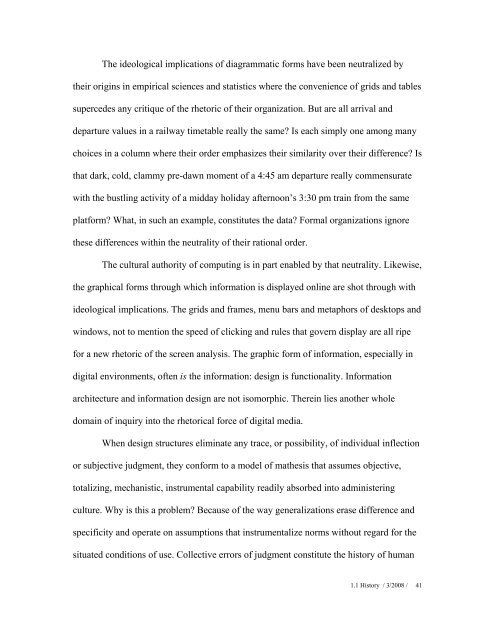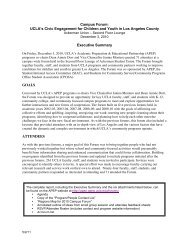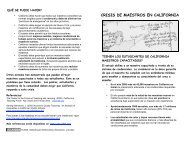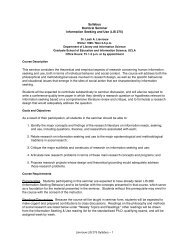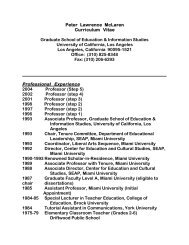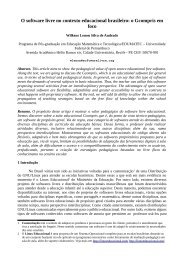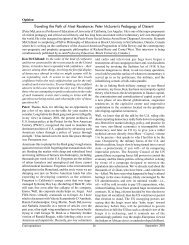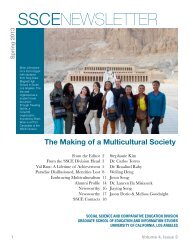1.1 From Digital Humanities to Speculative Computing - UCLA ...
1.1 From Digital Humanities to Speculative Computing - UCLA ...
1.1 From Digital Humanities to Speculative Computing - UCLA ...
You also want an ePaper? Increase the reach of your titles
YUMPU automatically turns print PDFs into web optimized ePapers that Google loves.
The ideological implications of diagrammatic forms have been neutralized by<br />
their origins in empirical sciences and statistics where the convenience of grids and tables<br />
supercedes any critique of the rhe<strong>to</strong>ric of their organization. But are all arrival and<br />
departure values in a railway timetable really the same? Is each simply one among many<br />
choices in a column where their order emphasizes their similarity over their difference? Is<br />
that dark, cold, clammy pre-dawn moment of a 4:45 am departure really commensurate<br />
with the bustling activity of a midday holiday afternoon’s 3:30 pm train from the same<br />
platform? What, in such an example, constitutes the data? Formal organizations ignore<br />
these differences within the neutrality of their rational order.<br />
The cultural authority of computing is in part enabled by that neutrality. Likewise,<br />
the graphical forms through which information is displayed online are shot through with<br />
ideological implications. The grids and frames, menu bars and metaphors of desk<strong>to</strong>ps and<br />
windows, not <strong>to</strong> mention the speed of clicking and rules that govern display are all ripe<br />
for a new rhe<strong>to</strong>ric of the screen analysis. The graphic form of information, especially in<br />
digital environments, often is the information: design is functionality. Information<br />
architecture and information design are not isomorphic. Therein lies another whole<br />
domain of inquiry in<strong>to</strong> the rhe<strong>to</strong>rical force of digital media.<br />
When design structures eliminate any trace, or possibility, of individual inflection<br />
or subjective judgment, they conform <strong>to</strong> a model of mathesis that assumes objective,<br />
<strong>to</strong>talizing, mechanistic, instrumental capability readily absorbed in<strong>to</strong> administering<br />
culture. Why is this a problem? Because of the way generalizations erase difference and<br />
specificity and operate on assumptions that instrumentalize norms without regard for the<br />
situated conditions of use. Collective errors of judgment constitute the his<strong>to</strong>ry of human<br />
<strong>1.1</strong> His<strong>to</strong>ry / 3/2008 /<br />
41


